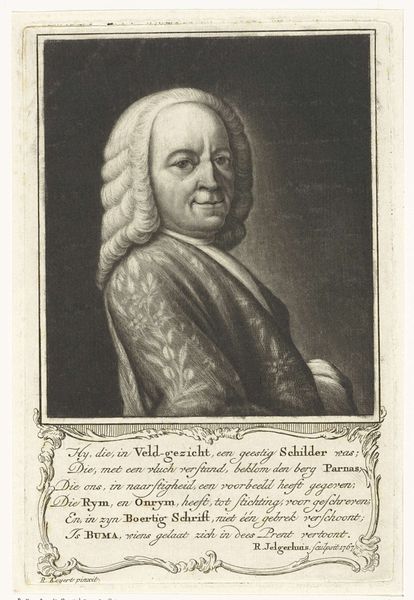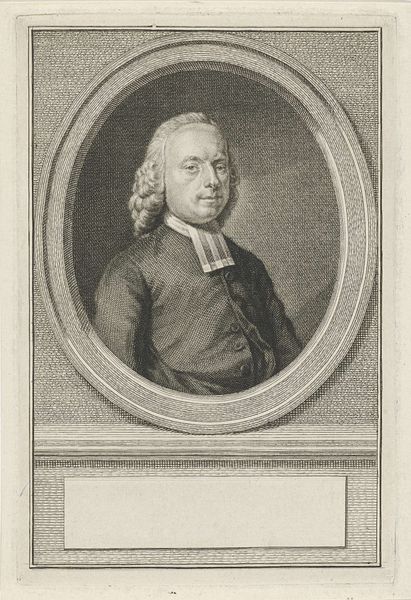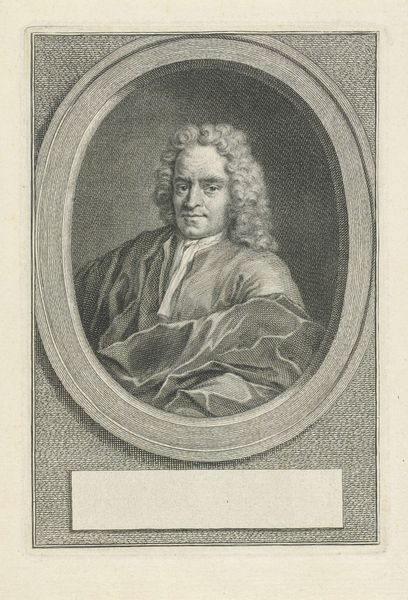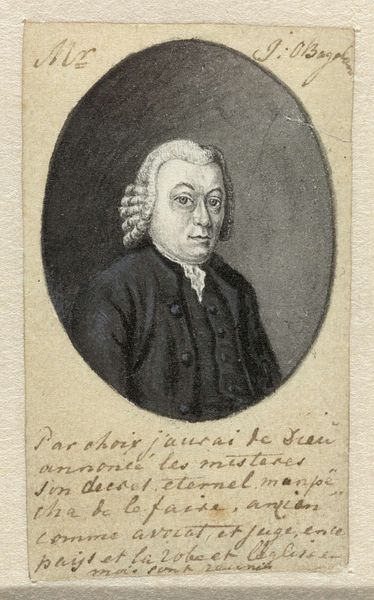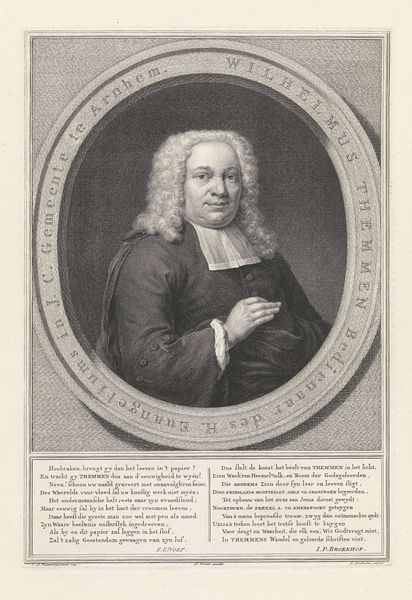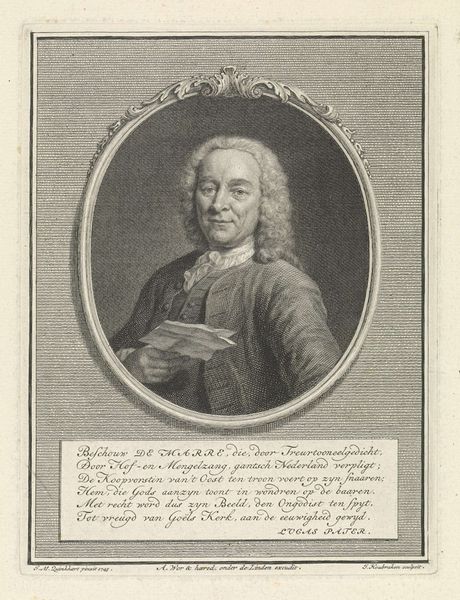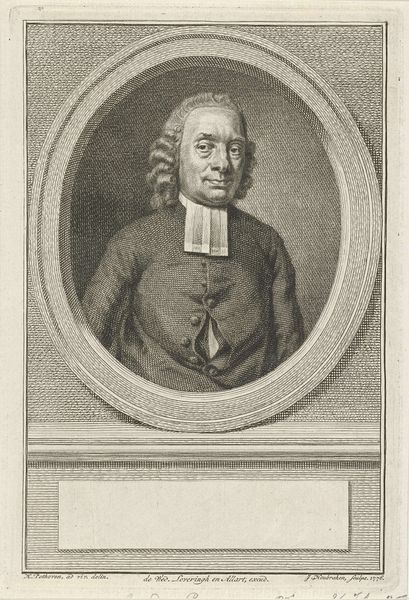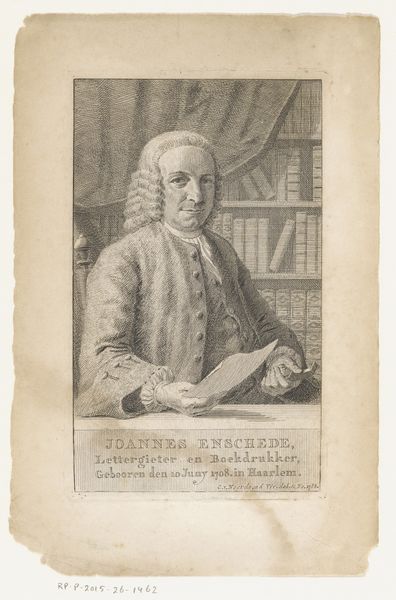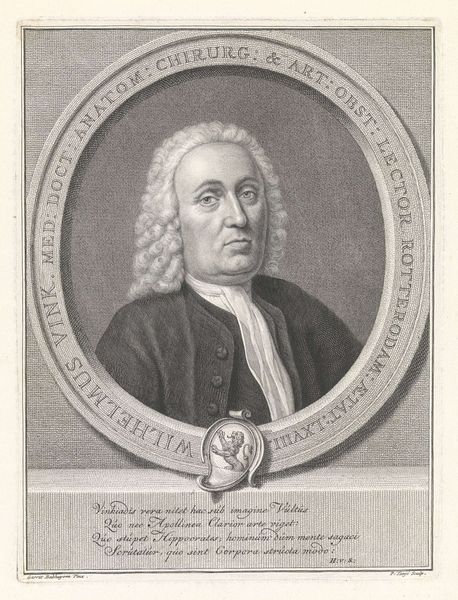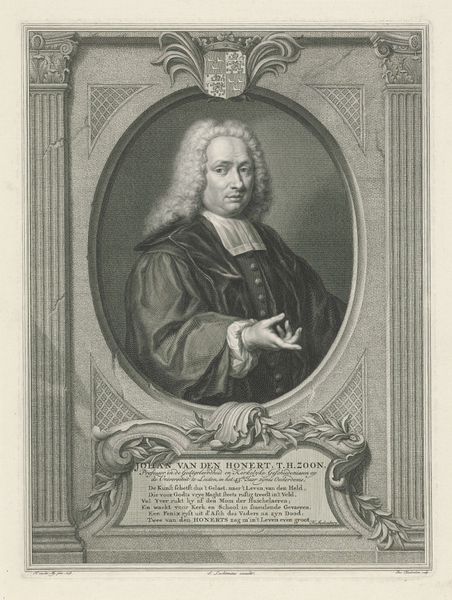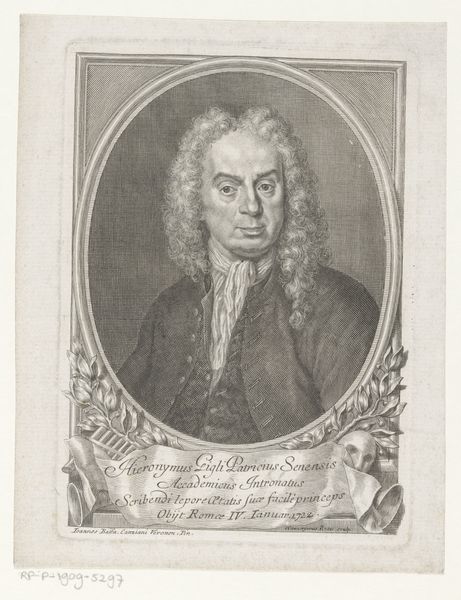
print, engraving
#
portrait
# print
#
old engraving style
#
15_18th-century
#
engraving
Dimensions: height 178 mm, width 134 mm
Copyright: Rijks Museum: Open Domain
Curator: Look at this portrait, rendered as an engraving. It's titled "Portret van Pieter Langendijk" and was created in 1751 by Jacob Houbraken. It resides here at the Rijksmuseum. Editor: Oh, the details are astounding. Immediately, the crisp lines against that soft, grey backdrop create a strangely intimate feeling. He seems scholarly, but the slight downturn of his mouth suggests a wry humor. Almost melancholic. Curator: Indeed. The very act of engraving allows for capturing incredible details – the fine wisps of his wig, the delicate wrinkles around his eyes, all contributing to a sense of character and depth. Editor: I wonder what significance lies within that hefty book he's holding. The binding looks almost geometric and mystical. A grimoire maybe? Or some important tome reflecting Langendijk's passions? Curator: The book is intentionally symbolic. The inscription at the bottom, you see, suggests that Langendijk is akin to literary giants, a restorer of Dutch glory through his works, placing him in the company of Livius and Homer. The book is perhaps representative of that timeless quality of literature. Editor: That adds another layer! It moves beyond a simple likeness and elevates it, placing the sitter within a continuum of intellectual achievement. Knowing this piece resides at the Rijksmuseum just seems… right. It feels like it belongs. Curator: Yes, it's a striking example of 18th-century portraiture through printmaking. Houbraken perfectly captures not just Langendijk's physical features but also his perceived status within the cultural landscape. Editor: What’s really neat is how a static image manages to create the sensation of intellectual and creative life; and what I found equally striking is discovering a bit of playfulness beneath his poised exterior, all in a fleeting expression that persists to this day. Curator: It shows that even within the rigid conventions of the portrait genre, artists find subtle means to infuse personality and feeling. Editor: Precisely. Art never truly lies dormant; It persists because it keeps reflecting ourselves to us in interesting new ways.
Comments
No comments
Be the first to comment and join the conversation on the ultimate creative platform.
